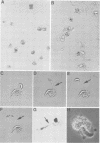Abstract
Peritoneal exudate cells from chickens immunized with two species of coccidia, Eimeria tenella or Eimeria maxima, were examined for their capacity to phagocytose stages of the parasite in vitro. True phagocytosis of the sporozoite stage is difficult to estimate because of its ability to invade cells, but may be evaluated by comparison with control suspensions. Peak activity (compared with cells from coccidia-free chickens) was found 3 to 5 weeks after the first inoulum of oocysts of E. tenella, and 1 week after the first inoculum of E. maxima— times which correspond to the onset of complete immunity to infection. Cells from coccidia-free chickens, in the presence of serum from birds immunized with E. tenella, phagocytosed sporozoites of E. tenella in a similar manner to cells from immunized birds. The immune serum had both cytophilic and opsonic adherence properties and the latter was species specific (for the two species tested).
Full text
PDF
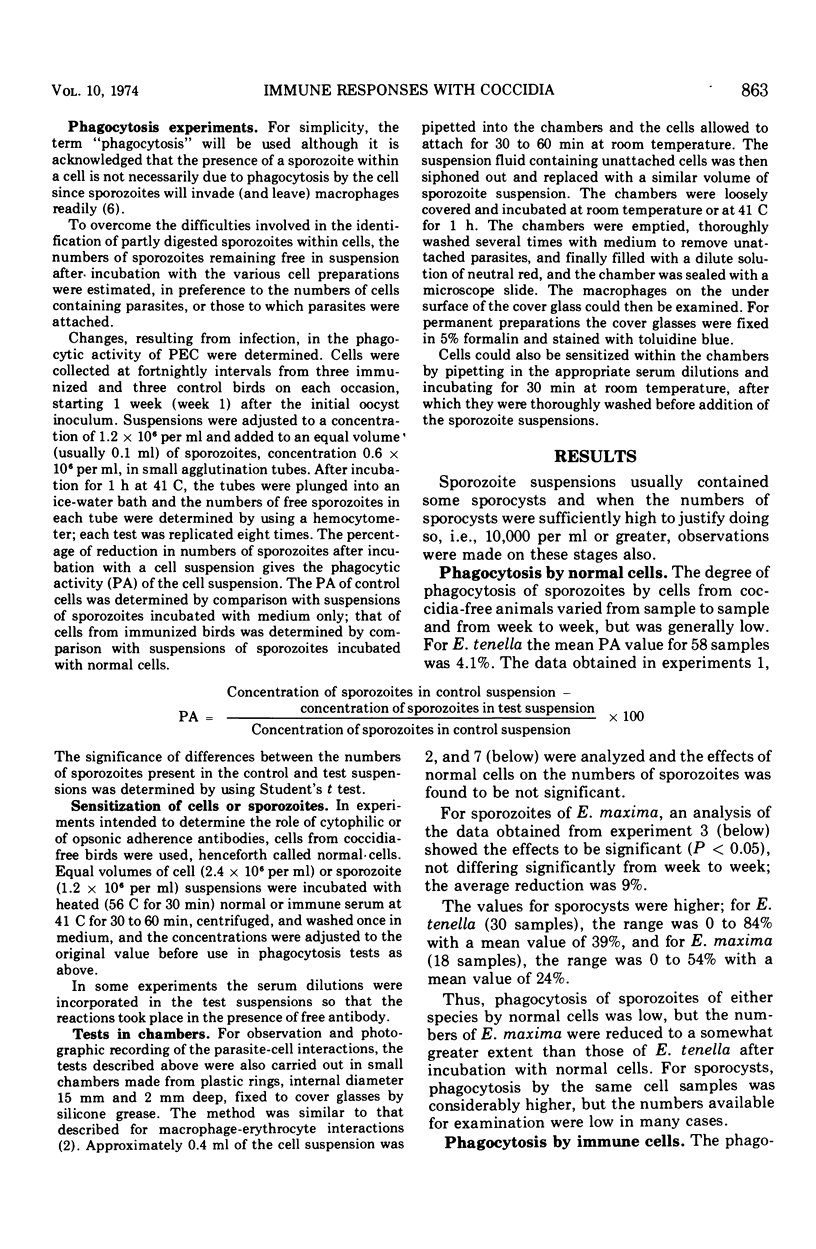

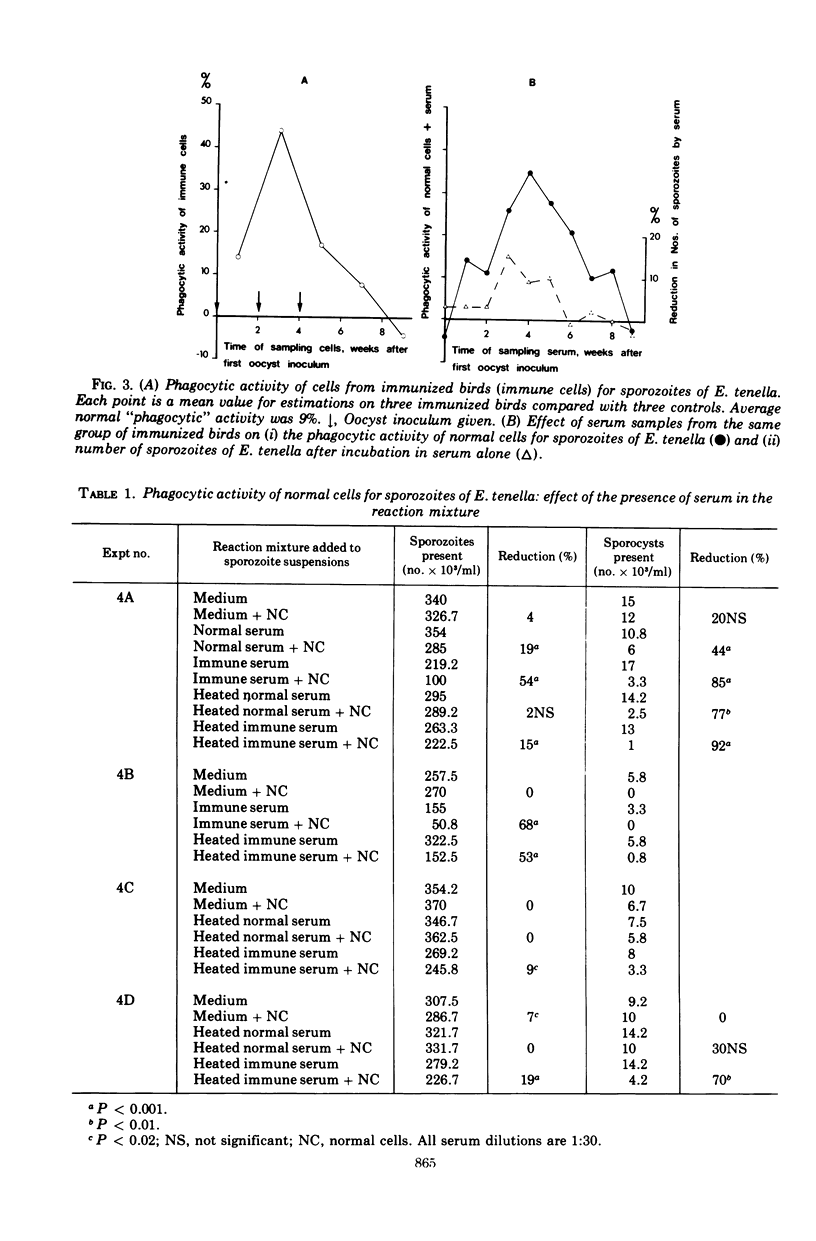
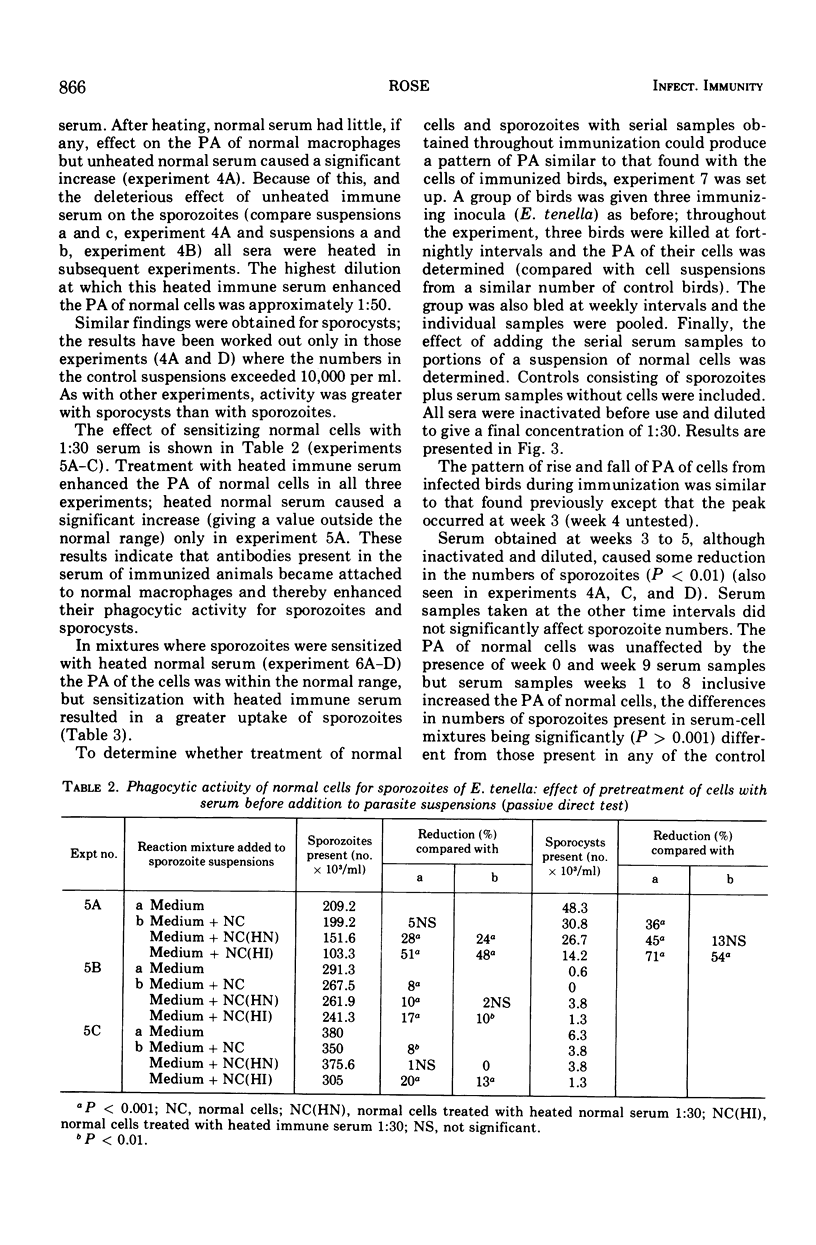
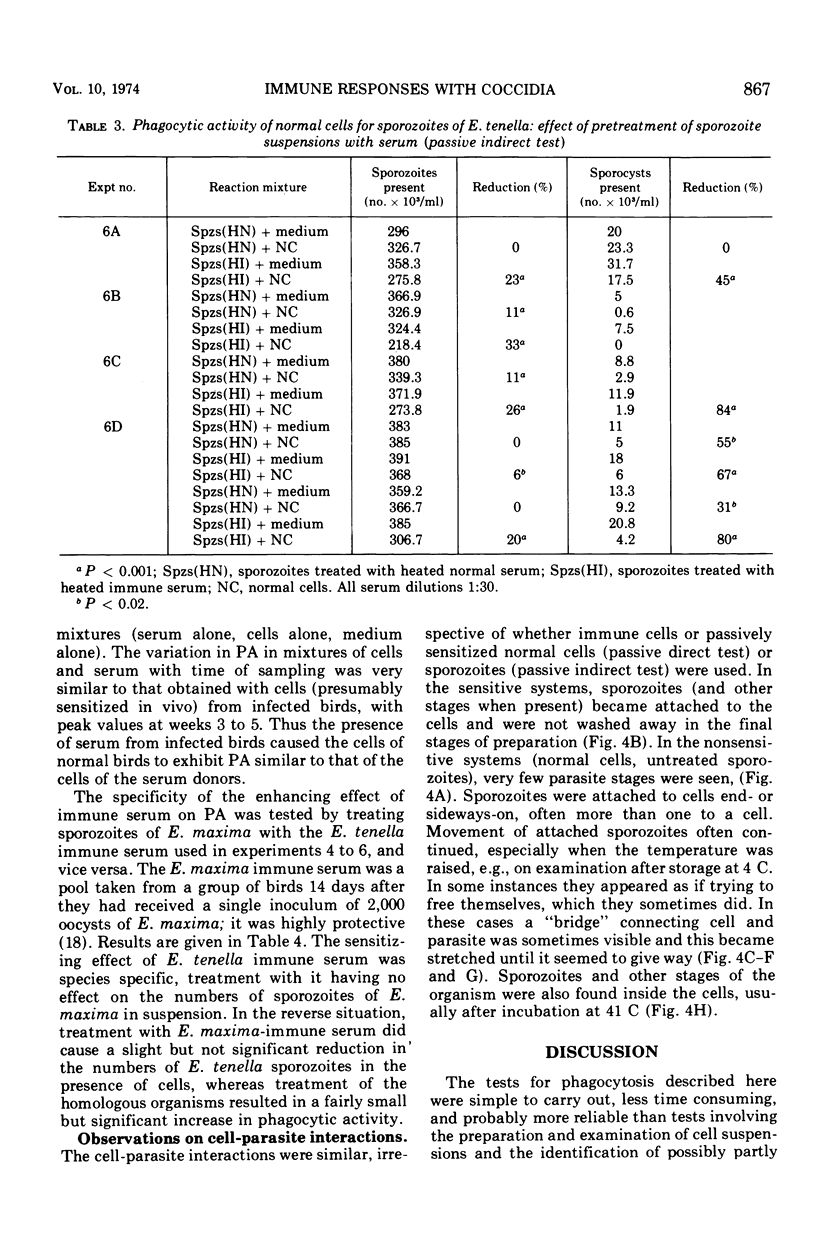
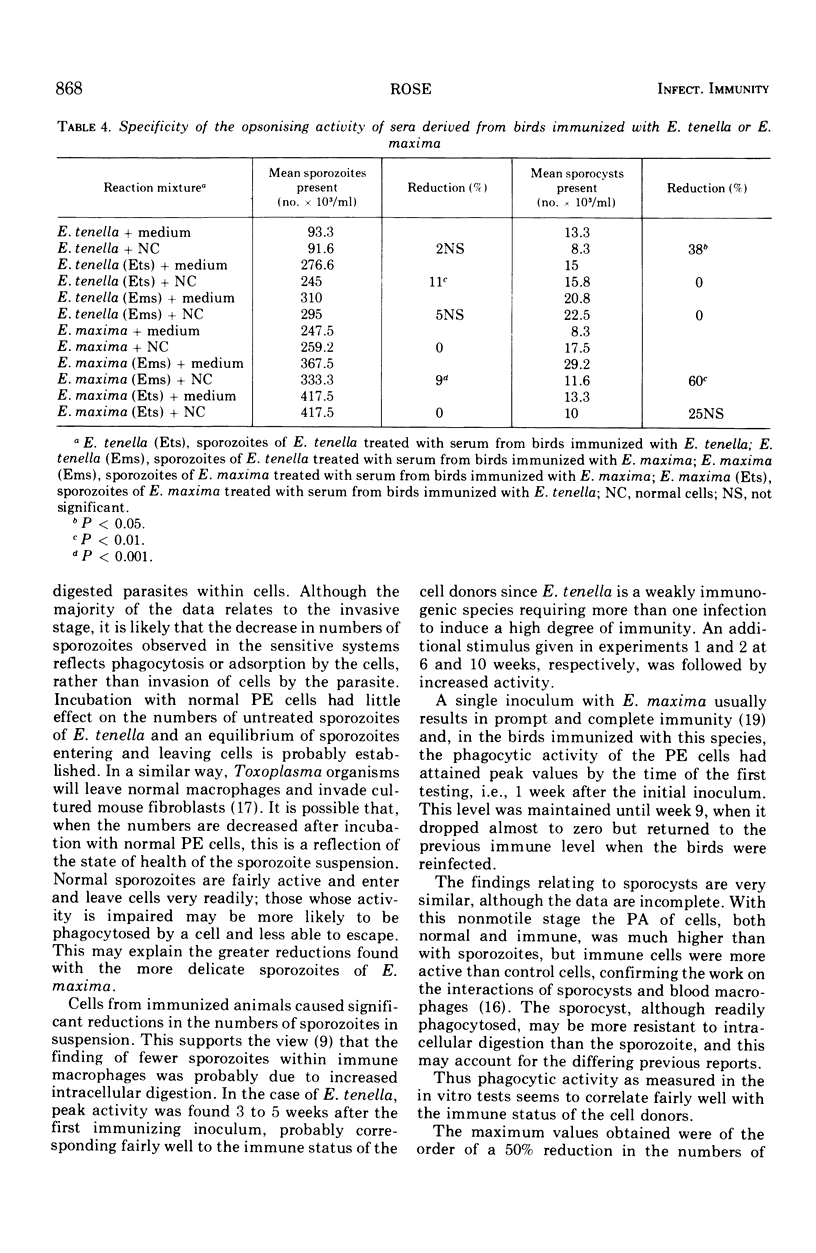
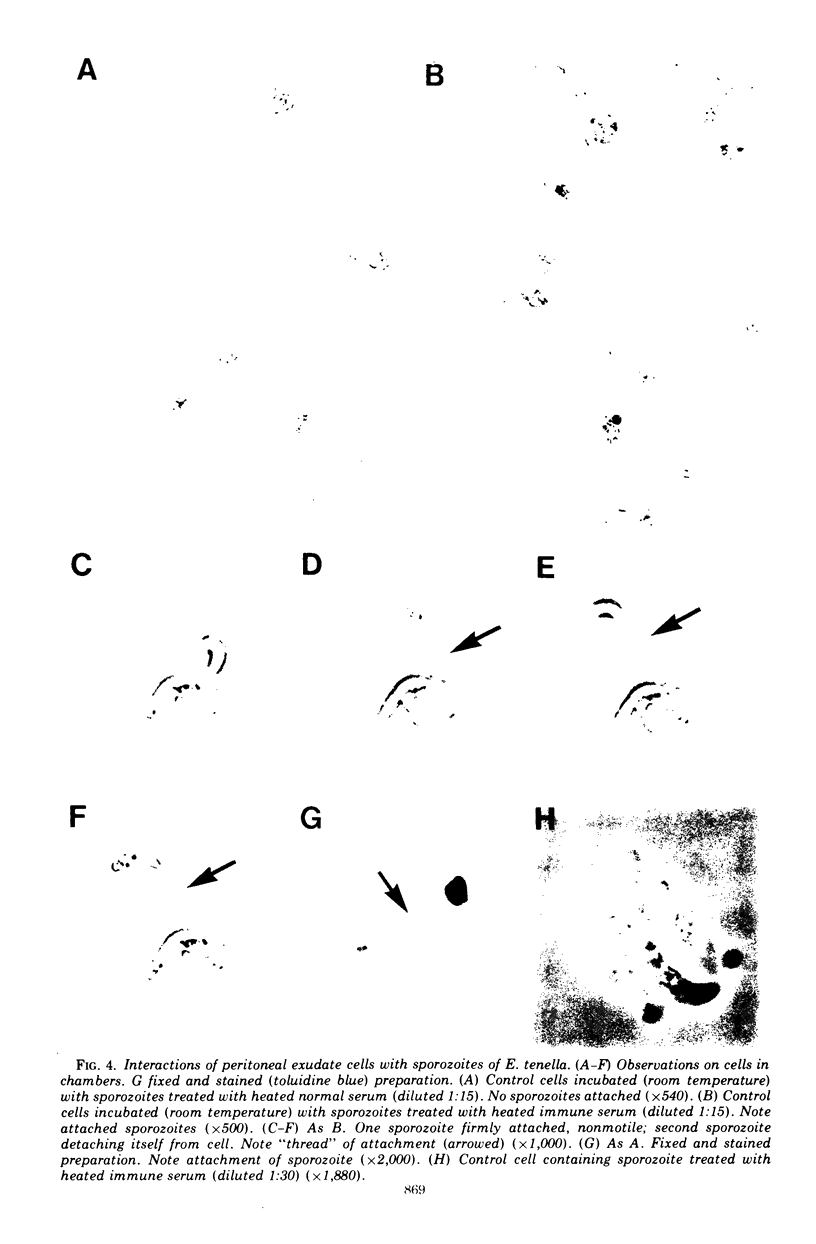
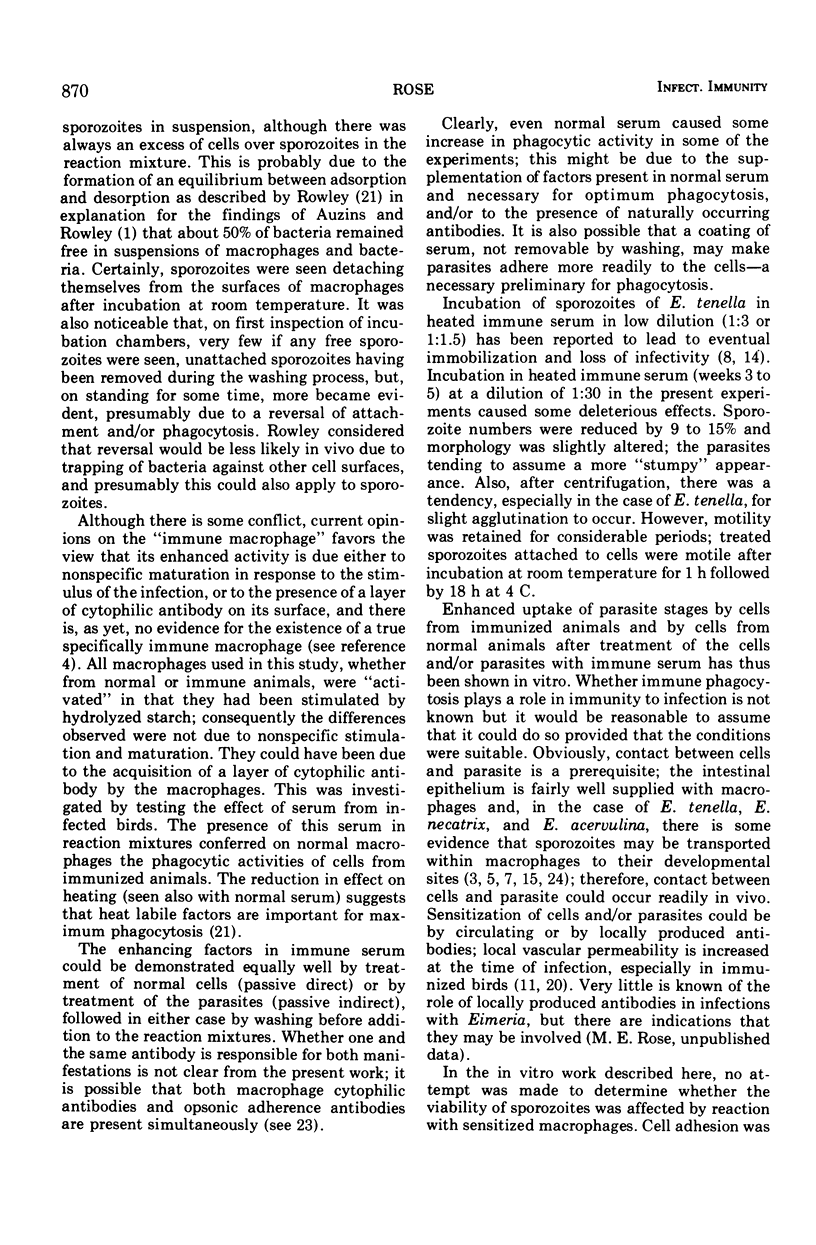

Images in this article
Selected References
These references are in PubMed. This may not be the complete list of references from this article.
- AUZINS I., ROWLEY D. FACTORS INVOLVED IN THE ADHERENCE OF S. TYPHIMURIUM C5 AND MOUSE PERITONEAL MACROPHAGES. Aust J Exp Biol Med Sci. 1963 Oct;41:539–546. doi: 10.1038/icb.1963.44. [DOI] [PubMed] [Google Scholar]
- BURNS W. C., CHALLEY J. R. Resistance of birds to challenge with Eimeria tenella. Exp Parasitol. 1959 Dec;8:515–526. doi: 10.1016/s0014-4894(59)80001-1. [DOI] [PubMed] [Google Scholar]
- Berken A., Benacerraf B. Properties of antibodies cytophilic for macrophages. J Exp Med. 1966 Jan 1;123(1):119–144. doi: 10.1084/jem.123.1.119. [DOI] [PMC free article] [PubMed] [Google Scholar]
- Doran D. J. The migration of Eimeria acervulina sporozoites to the duodenal glands of Lieberkühn. J Protozool. 1966 Feb;13(1):27–33. doi: 10.1111/j.1550-7408.1966.tb01864.x. [DOI] [PubMed] [Google Scholar]
- Fernando M. A. Fine structure of the schizonts and merozoites of Eimeria acervulina in the chicken. J Parasitol. 1974 Feb;60(1):149–159. [PubMed] [Google Scholar]
- Herlich H. Effect of chicken antiserum and tissue extracts on the oocysts, sporozoites, and merozoites of Eimeria tenella and E. acervulina. J Parasitol. 1965 Oct;51(5):847–851. [PubMed] [Google Scholar]
- Huff D., Clark D. T. Cellular aspects of the resistance of chickens to Eimeria tenella infections. J Protozool. 1970 Feb;17(1):35–39. doi: 10.1111/j.1550-7408.1970.tb05156.x. [DOI] [PubMed] [Google Scholar]
- Jones T. C., Hirsch J. G. The interaction between Toxoplasma gondii and mammalian cells. II. The absence of lysosomal fusion with phagocytic vacuoles containing living parasites. J Exp Med. 1972 Nov 1;136(5):1173–1194. doi: 10.1084/jem.136.5.1173. [DOI] [PMC free article] [PubMed] [Google Scholar]
- Kouwenhoven B., van der Horst C. J. Histological observations with respect to the immune mechanism in Eimeria acervulina infection in the domestic fowl. Z Parasitenkd. 1973 Aug 3;42(1):11–21. doi: 10.1007/BF00329006. [DOI] [PubMed] [Google Scholar]
- LONG P. L., ROSE M. E., PIERCE A. E. EFFECTS OF FOWL SERA ON SOME STAGES IN THE LIFE CYCLE OF EIMERIA TENELLA. Exp Parasitol. 1963 Oct;14:210–217. doi: 10.1016/0014-4894(63)90025-0. [DOI] [PubMed] [Google Scholar]
- Long P. L. Eimeria tenella: reproduction, pathogenicity and immunogenicity of a strain maintained in chick embryos by serial passage. J Comp Pathol. 1972 Oct;82(4):429–437. doi: 10.1016/0021-9975(72)90042-4. [DOI] [PubMed] [Google Scholar]
- Long P. L. Studies on the relationship between Eimeria acervulina and Eimeria mivati. Parasitology. 1973 Oct;67(2):143–155. doi: 10.1017/s0031182000046370. [DOI] [PubMed] [Google Scholar]
- PATTILLO W. H. Invasion of the cecal mucosa of the chicken by sporozoites of Eimeria tenella. J Parasitol. 1959 Jun;45(3):253–258. [PubMed] [Google Scholar]
- Remington J. S., Krahenbuhl J. L., Mendenhall J. W. A role for activated macrophages in resistance to infection with Toxoplasma. Infect Immun. 1972 Nov;6(5):829–834. doi: 10.1128/iai.6.5.829-834.1972. [DOI] [PMC free article] [PubMed] [Google Scholar]
- Rose M. E. Immunity to coccidiosis: protective effect of transferred serum in Eimeria maxima infections. Parasitology. 1971 Feb;62(1):11–25. doi: 10.1017/s0031182000071249. [DOI] [PubMed] [Google Scholar]
- Rose M. E., Long P. L. Immunity to coccidiosis: gut permeability changes in response to sporozoite invasion. Experientia. 1969 Feb 15;25(2):183–184. doi: 10.1007/BF01899112. [DOI] [PubMed] [Google Scholar]
- Rose M. E. The early development of immunity to Eimeria maxima in comparison with that to Eimeria tenella. Parasitology. 1974 Feb;68(1):35–45. doi: 10.1017/s0031182000045352. [DOI] [PubMed] [Google Scholar]
- Scholtyseck E., Strout R. G., Haberkorn A. Schizonten und Merozoiten von Eimeria tenella in Makrophagen. Z Parasitenkd. 1969;32(3):284–296. doi: 10.1007/BF00329484. [DOI] [PubMed] [Google Scholar]
- Tizard I. R. Macrophage-cytophilic antibodies and the functions of macrophage-bound immunoglobulins. Bacteriol Rev. 1971 Dec;35(4):365–378. doi: 10.1128/br.35.4.365-378.1971. [DOI] [PMC free article] [PubMed] [Google Scholar]
- VAN DOORNINCK W. M., BECKER E. R. Transport of sporozoites of Eimeria necatrix in macrophages. J Parasitol. 1957 Feb;43(1):40–44. [PubMed] [Google Scholar]
- el-Kasaby A., Sykes A. H. The role of chicken macrophages in the parenteral excystation of Eimeria acervulina. Parasitology. 1973 Apr;66(2):231–239. doi: 10.1017/s0031182000045170. [DOI] [PubMed] [Google Scholar]



